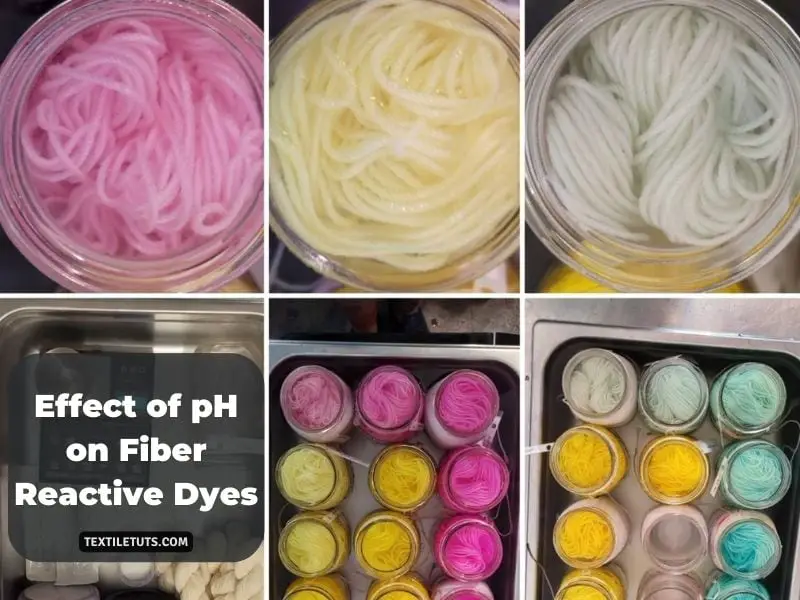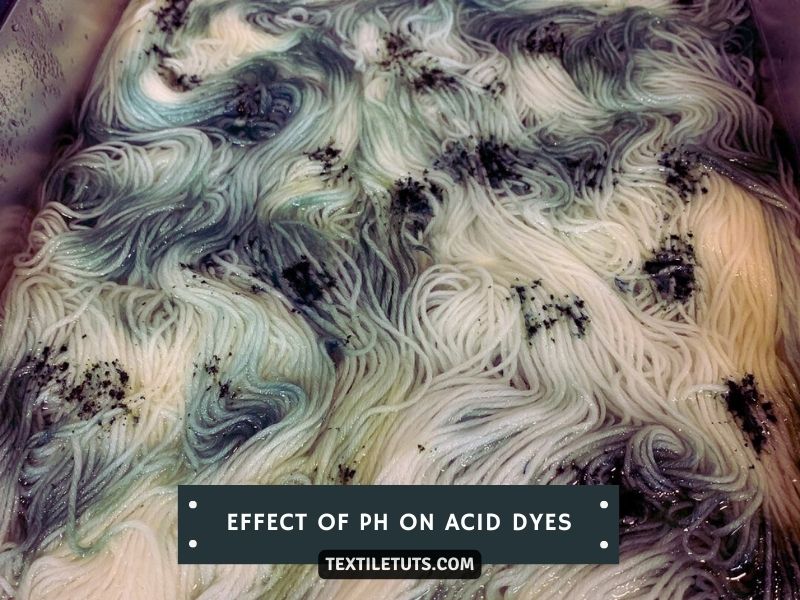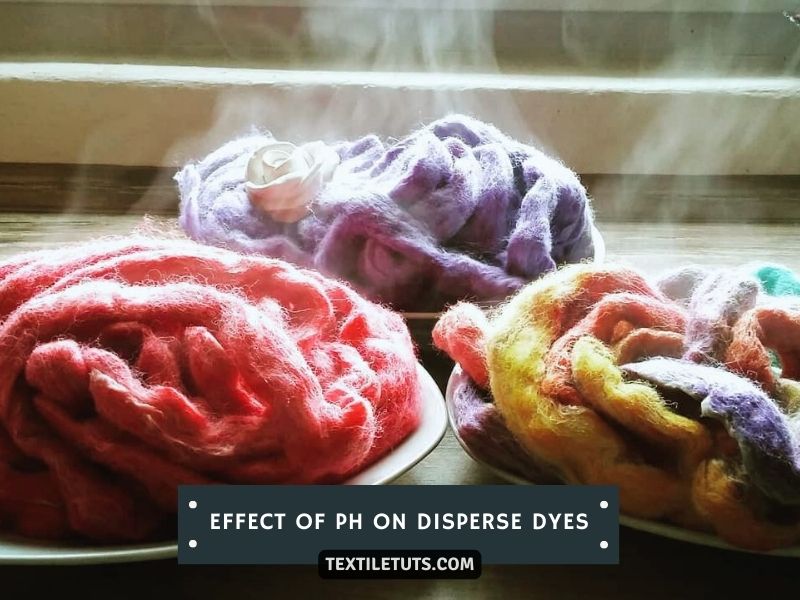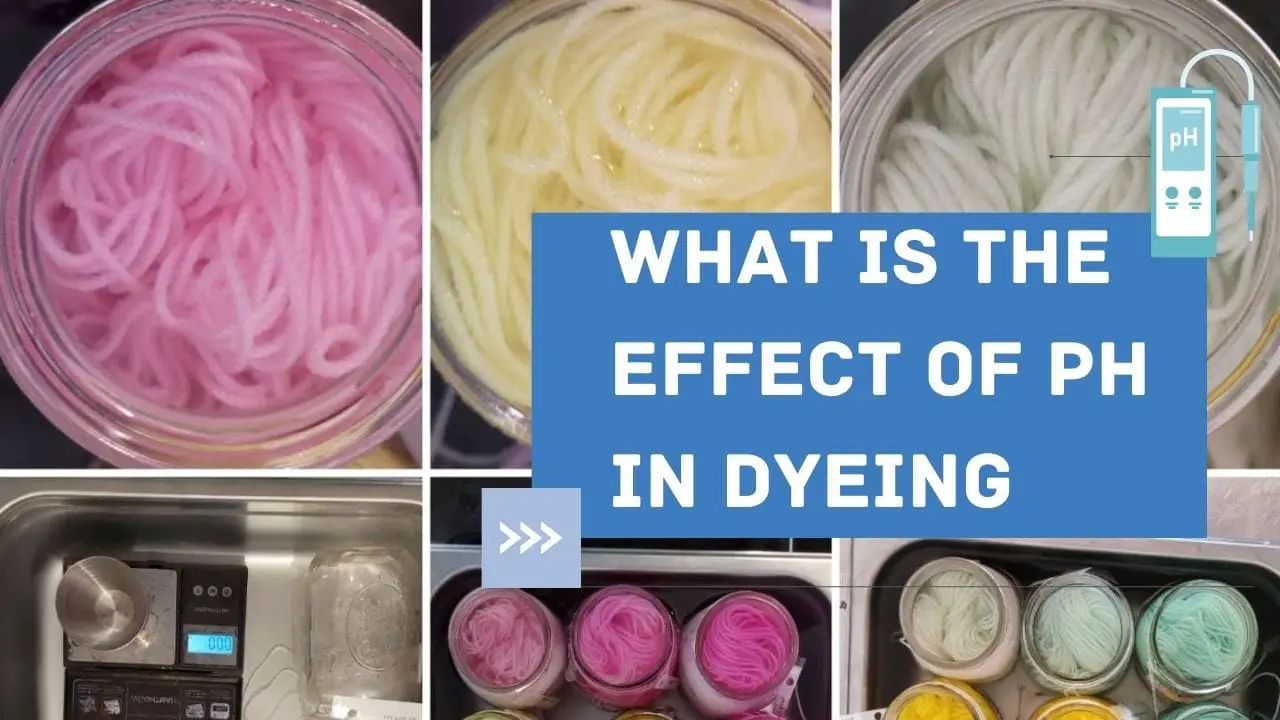What is the effect of pH in dyeing and What is the optimal pH
pH is numerous expressions of acidity or alkalinity of a solution on a logarithmic scale. The values range from 0-14. 7 means neutral, below 7 means more acidic, and above 7 means more alkaline.
Every chemical reaction has an optimum pH in which they work best. As dyeings are types of chemical reactions, different dyeing requires different specific pH.
Effect of pH on Fiber Reactive Dyes

Most of the fiber reactive dyes, i.e., best cotton dye products require a high pH that is alkaline pH in which a cellulosate anion in cotton forms that are capable of creating strong covalent bonds. The dye will not get fixed into the cellulosic fiber without alkaline pH. In reactive dyeing, soda ash is used during the fixation stage for creating the alkaline pH required.
Now I will discuss the influence of pH in different stages of reactive dyeing.
For preventing the premature hydrolysis of dyes, a neutral or slightly acidic pH should be maintained at the start of the dyeing. Patchy or uneven dyeing will occur if the processed fabric(Scoured and bleached) is not appropriately neutralized.
Lower dosing of alkali will cause lower pH, and so the dyes will have less tendency to get fixed into the fiber. This will result in poor washing and rubbing fastness.
Higher dosing of alkali may cause hydrolysis of dyes and so lower depth of shade and also low washing fastness may occur.
After the dyeing finishes, proper neutralizing is required. Otherwise, dye bleeding may occur during the subsequent hot wash and soaping.
For dyeing mercerized cellulosic fiber with Procion MX type dichlorotriazine dyes, the optimum pH is given below:
| Dyes | pH |
|---|---|
| Brilliant Red 2BS | 10.2 |
| Brilliant Red 5BS | 10.4 |
| Brilliant Yellow 6GS | 10.8 |
| Blue 3GS | 10.8 |
| Yellow RS | 10.9 |
| Brilliant Orange GS | 11.0 |
| Brilliant Blue RS | 11.0 |
| Red GS | 11.1 |
Generally, pH around 10.5 is optimal. They will be 0.1-1 units higher in the case of rayon.
For dyeing cotton with Remazol type vinyl sulfone dyes, the optimum pH is 11.5. Remazol dyes can be used to dye a wool jumper and other protein fibers as true fiber reactive dyes at a lower pH of 5.5.
Effect of pH on Acid Dyes

A low pH is required during acid dyeing at which acid dye molecules create H-bond (Hydrogen) with protein fibers (wool, silk, nylon, etc.). The pH requirements depend on the type of acid dyes used. Some require a significantly lower pH, and some require weak acids.
Silk can be dyed at acidic pH and also at high ph, but wool can only be dyed at low pH as they get damaged in high pH.
pH range for different types of acid dyes are given below:
| Dye Class (Acid dyes) | pH |
|---|---|
| Super milling | 5.5-7.0 |
| Milling | 5.2-6.2 |
| Lanaset | 4.5-5.0 |
| Leveling | 2.5-3.5 |
| Procion MX (used as acid dyes) | 2.5-3.5 |
Effect of pH on Disperse Dyes

Dyeing polyester with disperse dyes requires an acidic pH. When the leveling chemicals are added to the dyeing bath, the pH should be between 4.5-4.7. And, after the addition of colors 4.2-4.3 pH.
Effect of pH on Basic Dyes
The optimal pH for basic dyeing is typically in the range of 4-5.5. However, the exact pH will vary depending on the type of fiber being dyed and the specific dye being used.
| pH | Effect |
|---|---|
| Acidic (< 4) | Poor dye uptake and fastness |
| Neutral (4-7) | Good dye uptake and fastness |
| Alkaline (> 7) | Over-dyeing and poor dye fastness |
Why Would Basic Dyes Be More Effective Under Alkaline Conditions?
- Basic dyes are positively charged molecules, and when the pH of the solution is alkaline, the positive charges on the dye molecules are attracted to the negative charges on the fiber.
- In contrast, when the pH of the solution is too acidic, the positive charges on the dye molecules are repelled by the negative charges on the fiber, which makes it more difficult for the dye to bind.
- The optimum pH for basic dyeing is typically in the range of 4 to 6.5. At this pH, the positive charges on the dye molecules are attracted to the negative charges on the fiber, but the repulsion between the dye molecules and the fiber is not too strong. This results in a good balance between dye uptake and dye fastness.
If the pH of the solution is too alkaline, the positive charges on the dye molecules will be too strongly attracted to the negative charges on the fiber. This can result in over-dyeing and poor dye fastness.
If the pH of the solution is too acidic, the positive charges on the dye molecules will be too strongly repelled by the negative charges on the fiber. This can result in under-dyeing and poor dye fastness.

